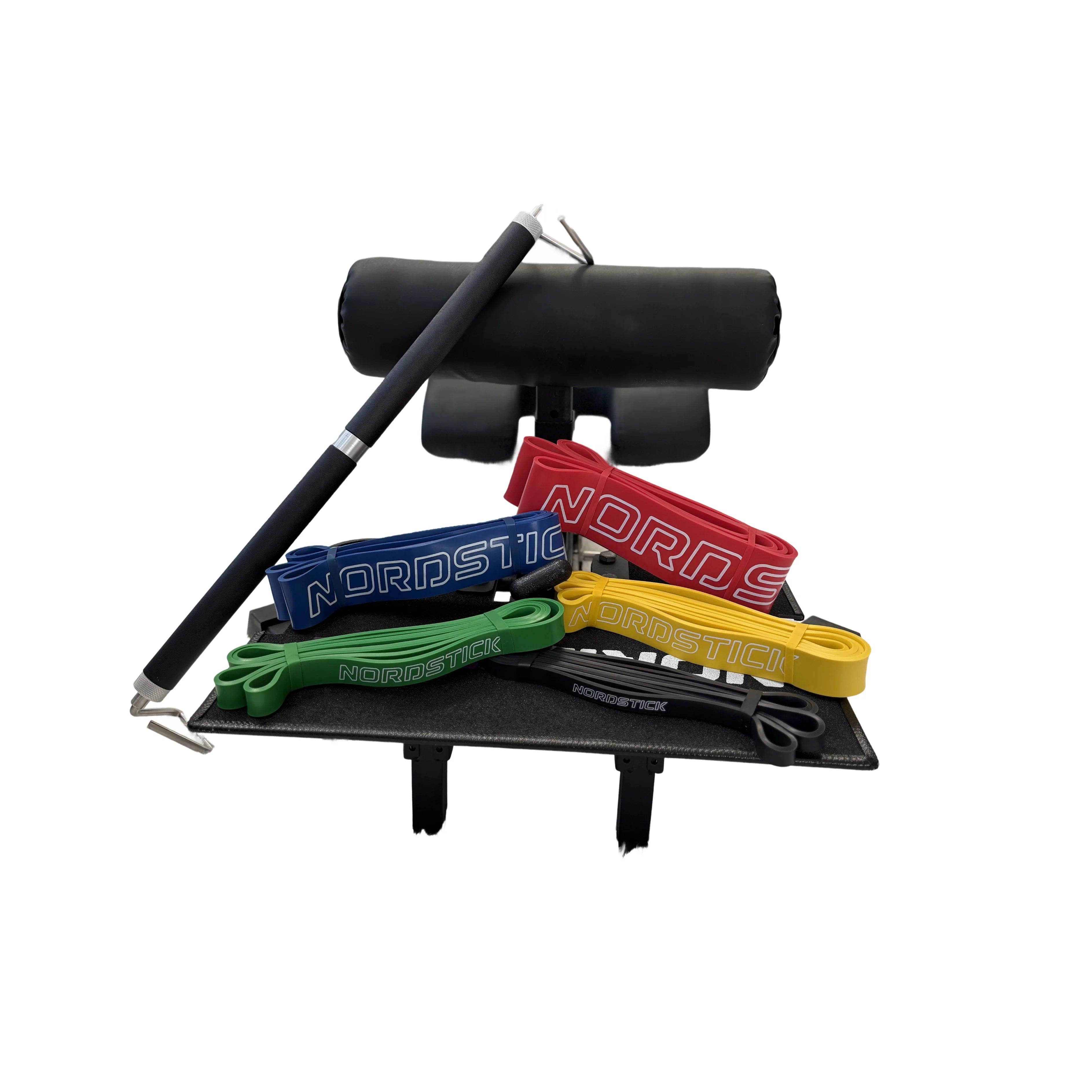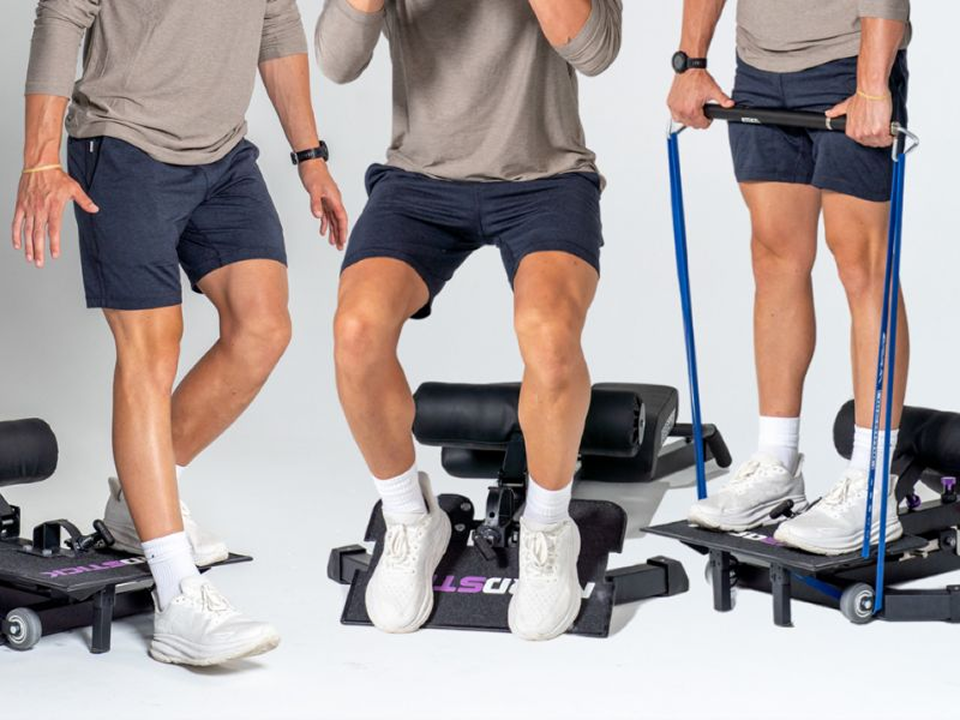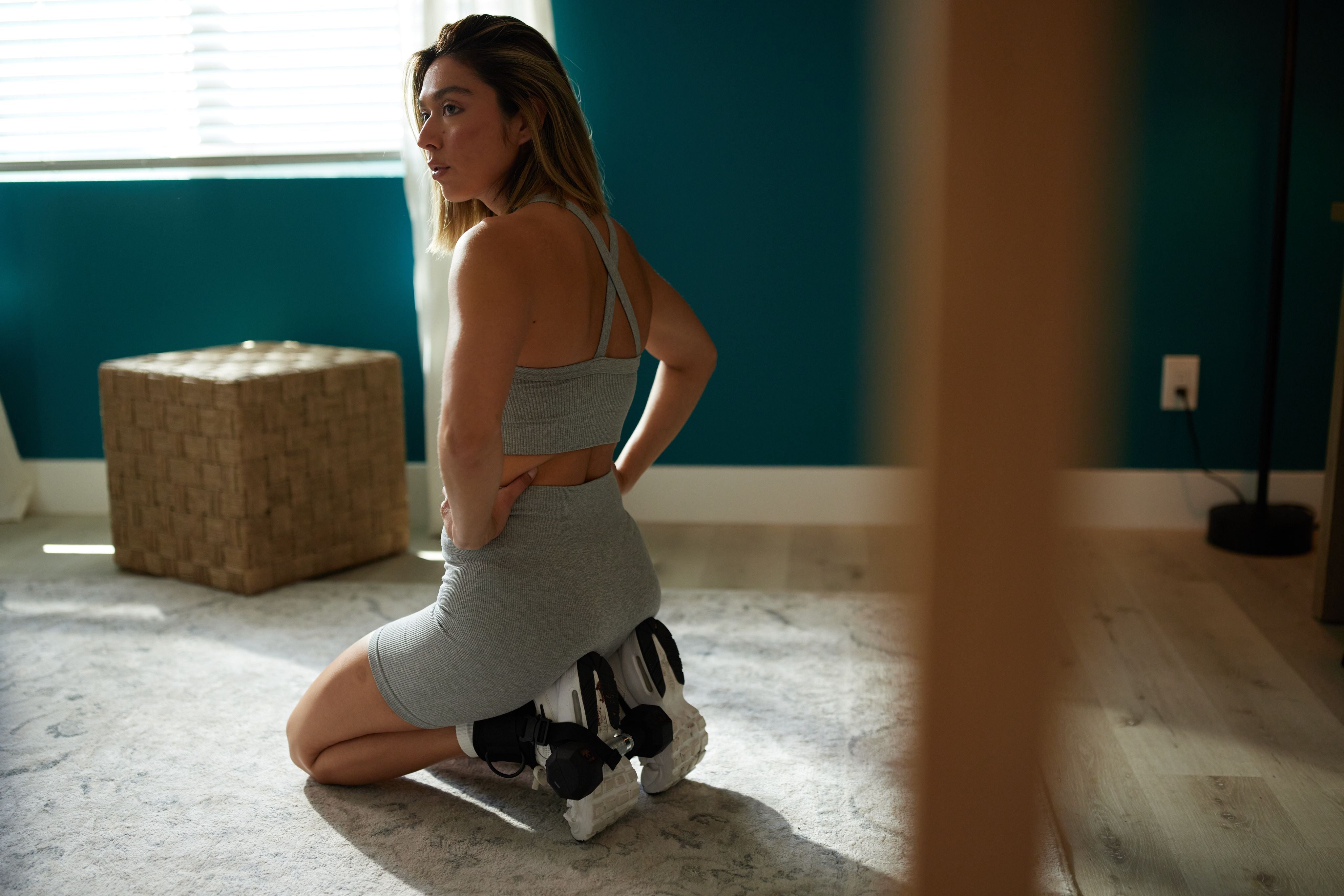Back extensions are a fantastic way to boost your core strength, enhance your posture, and fortify those often-neglected lower back muscles—and you can do it from the comfort of your home. Perfect for fitness enthusiasts and those constantly on the move, these exercises are easily adaptable to any home gym setup, requiring minimal equipment like a mat or advanced tools such as a NordBench.
By incorporating back extensions into your routine, you'll not only target key muscle groups like the glutes, hamstrings, and erector spinae, but also build confidence in your overall physical prowess. Whether you're using just your body weight or adding resistance bands for an extra challenge, mastering these exercises can lead to a more robust and resilient body.
Let's dive into the essentials of performing back extensions at home, ensuring you achieve the best results while maintaining proper form and minimizing injury risk.
Key Takeaways
- Strengthen three key muscle groups at once: Back extensions are a powerful exercise that targets your hamstrings, glutes, and lower back, promoting overall lower body strength.
- Simple setup, serious results: With minimal equipment like the NordBench (or even bodyweight), you can perform effective back extensions right at home.
- Improve posture and injury prevention: Regular back extensions help improve posture and stability, reducing the risk of lower back pain and injuries.
Benefits of Back Extensions
Improve Posture and Strength
Back extensions are an excellent exercise for improving posture and building strength in the lower back. When performed correctly, they target the erector spinae muscles, which play a crucial role in maintaining a straight line for your spine.
Strengthening these muscles helps keep your head, neck, and spine aligned, reducing the risk of slouching. This alignment is essential for preventing back pain and enhancing overall body mechanics.
Moreover, back extension exercises engage the gluteus maximus and hamstrings, which are vital for a strong posterior chain. By incorporating these exercises into your routine, you'll notice a positive impact on your posture and lower back strength.
This improvement not only aids in daily activities but also enhances performance in other workouts. Remember to keep your movements controlled and maintain proper form to maximize benefits while minimizing injury risks.

Prevent Injuries and Enhance Stability
Back extensions play a pivotal role in injury prevention and enhancing stability. By fortifying the lower back and core muscles, these exercises help create a stable base for all bodily movements. A strong core supports the spine during physical activities, reducing the risk of strains and injuries.
Additionally, back extensions promote better balance and coordination, essential for avoiding falls and mishaps. As you strengthen your erector spinae and surrounding muscle groups, you'll also improve your ability to perform dynamic movements with control.
Engaging in these exercises regularly can significantly decrease the likelihood of developing chronic lower back pain, a common issue affecting many individuals. To maximize injury prevention, ensure you maintain proper form, such as keeping a slight bend in the knees and feet shoulder-width apart.
Consistent practice will lead to enhanced stability, empowering you to tackle more challenging exercises with confidence and safety.

How to Perform Back Extensions At Home
Bodyweight Variations
Do It on the Floor
I like to do this the "No Excuses" because you can do it absolutely anywhere. Performing back extensions on the floor is simple and effective. Begin by lying face down with your arms extended in front and your legs straight, keeping your feet hip-width apart. Pull your belly button towards your spine to engage your core.
Gently lift your upper body and legs off the ground at the same time, maintaining a neutral head position. Hold this posture for a few seconds to engage your back muscles, then gradually lower yourself back down with control. Repeat the movement, ensuring each repetition is steady and controlled.
Superman Stretch
This a great variation to further challenge your muscles. Start by lying flat on your stomach with your arms and legs extended. Simultaneously lift your arms, chest, and legs off the floor, resembling a flying superhero. Keep your head in a neutral position, and focus on squeezing your back and glute muscles. Hold briefly, then gently lower your limbs back to the ground. This exercise targets the entire posterior chain and boosts muscle strength.
Plank Hip Extension
The plank hip extension adds a dynamic twist to the classic plank by engaging your glutes and lower back. Begin in a plank position with your forearms and toes on the ground, ensuring your body forms a straight line from head to heels. Engage your core and slowly lift one leg towards the ceiling, keeping it straight. Lower it back down with control, and repeat on the other side. Alternating sides helps build stability and strength in your core and lower back.
With the NordBench
The NordBench offers a versatile platform for performing elevated back extensions, making it a valuable addition to your home gym. This extension machine supports various angles, allowing you to gradually increase the intensity of your workouts.
To perform back extensions using the NordBench, adjust the bench to your desired angle. Position yourself face-down, with your hips resting at the edge and feet secured under the ankle rollers. Begin in the starting position with your upper body parallel to the ground. Engage your core, and lift your upper body to form a straight line from head to toe. Hold the position briefly before slowly lowering back down.
This movement targets the erector spinae muscles, glutes, and hamstrings, providing comprehensive strengthening of the posterior chain. The NordBench's adjustability ensures proper form and accommodates users of different heights. Incorporating these exercises will enhance your low back strength and stability, supporting your fitness goals effectively.
With a Yoga Ball and a NordStick
Using a yoga ball and a NordStick for back extensions introduces instability, increasing muscle engagement and enhancing core strength. Begin by positioning the yoga ball under your hips and abdomen, with your feet secured under the NordStick.
This setup engages your lower body and core muscles, challenging your balance. In the starting position, keep your arms crossed over your chest or extended forward. As you exhale, slowly lift your upper body, maintaining a straight line from your head to your lower back. Hold this pose for a few seconds to maximize muscle activation, then slowly lower back down.
This variation works not only your erector spinae but also engages your gluteus maximus and hamstrings. By incorporating the yoga ball, you introduce a dynamic element that improves your range of motion and balance, making this a great exercise for building functional strength.
Conclusion

Incorporating back extension exercises into your home workout routine is an effective way to bolster your core strength and support spinal health. Whether you're using just your body weight, the versatile NordBench, or a stability-enhancing yoga ball and NordStick combination, these exercises offer significant benefits for your posture and injury prevention.
Regular practice not only strengthens key muscle groups like the erector spinae, glutes, and hamstrings, but also enhances overall stability and mobility. Remember to maintain proper form and gradually progress through different variations to avoid common mistakes and ensure safety.
By integrating these exercises into your fitness regimen, you'll develop a robust and resilient body capable of tackling more advanced workouts. Embrace the journey of building strength and confidence with back extensions, and enjoy the long-term benefits of a healthier, more stable body. Keep progressing at your own pace and watch as your physical capabilities grow stronger over time.
FAQs
How to do back extensions without a machine?
Performing back extensions without a machine is straightforward and requires minimal equipment. Start by lying face down on a mat with your legs extended and feet hip-width apart. Place your arms either by your sides or crossed over your chest. This is your starting position.
Engage your core, and gently lift your upper body off the ground while keeping your legs and lower body anchored. Aim to form a slight arch in your back, holding the position for a few seconds to maximize muscle engagement. Slowly lower back down, ensuring control throughout the movement.
Alternatively, you can perform extensions using a stability ball and a Nordstick to add an element of instability, enhancing core activation. Position the ball under your hips and engage your core as you lift and lower your torso. These variations target the erector spinae, gluteus maximus, and hamstrings effectively, offering a comprehensive workout for your lower back and core muscles.
How can I extend my back at home?
Extending your back at home can be achieved through various exercises tailored to improve flexibility and strength. Begin with simple stretches like the cat-cow pose, which involves moving your spine through a full range of motion to enhance flexibility.
Another effective exercise is the superman stretch, where you lie face down and lift your arms and legs simultaneously, holding the position for a few seconds to engage the lower back muscles. For added intensity, use a stability ball and a Nordstick. Position the ball under your abdomen, with your feet anchored, and perform extensions by lifting your upper body.
This not only works the erector spinae but also challenges your core stability. Incorporating these exercises into your routine will help maintain a healthy spine and improve overall posture. Consistent practice will lead to increased back strength, allowing for safer and more effective movement throughout daily activities and other workouts.

How to do back extensions with a bench?
To perform back extensions with a bench, begin by adjusting the bench to a comfortable height where your hips can hinge freely over the edge.
Position yourself face down, securing your feet under the ankle rollers to maintain stability. Keep your body straight and align your hips with the edge of the bench. Start in the lowered position with your upper body hanging toward the floor.
Engage your core and glutes as you lift your torso upward until your body forms a straight line from head to toe. Hold this position briefly to engage the erector spinae muscles effectively. Slowly lower your upper body back down, maintaining control to avoid strain or injury.
This exercise targets the lower back, gluteus maximus, and hamstrings, enhancing your posterior chain strength. By incorporating this back extension variation into your workout routine, you can build better back support and overall body stability.

Are back extensions healthy?
Back extensions are generally considered a healthy and beneficial exercise when performed with proper form and technique. They play a crucial role in strengthening the core and lower back muscles, which are essential for maintaining good posture and spinal stability.
By targeting the erector spinae, gluteus maximus, and hamstrings, back extensions help build a robust posterior chain, reducing the risk of lower back pain and injury. Moreover, they improve overall flexibility and range of motion, contributing to better functional movement in daily activities.
However, it's vital to approach these exercises with caution and ensure correct form to prevent strain or injury. Gradually increasing the intensity and listening to your body are key to safely reaping the benefits of back extensions.
For individuals with pre-existing back conditions, consulting a personal trainer or healthcare professional before incorporating these exercises into a fitness routine is advisable to ensure they are suitable and performed safely.




































Leave a comment
This site is protected by hCaptcha and the hCaptcha Privacy Policy and Terms of Service apply.